Sherman 75mm turret types
The
M4 Sherman had many variations in hull and turret design during its
production run. The earliest turret had the "low bustle", while the
later ones had the "high bustle".
The turret of the T6 pilot featured the
gunner's rotor sight device to the right side
of the turret,
two pistol ports on the turret sides with M3 Lee style protectoscopes,
the M3 Lee MG cupola, & a very simple gun shield. Note that neither the turret, nor the gun are equipped with
lifting rings.

The first production turrets
continued to have the rotor sight device. From counting heads, it is
thought that about the first 30 Lima LW Shermans & maybe the first
10 Pressed Steel Cars had that device. It was vulnerable to being
fouled by bullet splash & was replaced in production with the
gunner's periscope in April, 1942. As best we can tell, no other
company's Shermans used the rotor sight device, so this should only be
seen on very early M4A1s. Like the pepperpot exhaust, the rotor
sight device was considered "not-battle worthy", so those turrets were not to
be shipped overseas to combat units. However, at least one slipped
through the cracks, & a period photography shows one as a battle
casualty in Italy (photo courtesy of Massimo Foti).
The other features of the T6 turret were replaced or improved by
the time that production got underway. The commander's split hatch
quickly replaced the M3 Lee style MG cupola, the turrets were built with a pistol port with solid door on the left
side only, & a rotor gun shield (mantlet) was added, to protect the gun works
from bullet splash (as seen on the turret shown above).
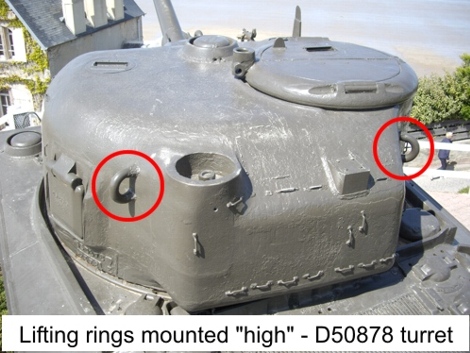

Early production turrets had the lifting rings mounted
"high", and by the end of 1942, they had been moved to the more usual "low" position.
The 75mm turret rear profile was changed to improve clearance for the
larger drivers' hatches of the later hull designs. This clearance
change resulted in the "high bustle" turret with older turrets termed as
"low bustle." These are modelers' terms only, the Army would have
referred to the turrets by drawing number.
In December 1943, Pressed Steel Car transitioned to
the high bustle D50878 turret, such as are on the 2 M4A1(75) DDs at Port-en-Bessin (France) & the one
at Slapton Sands (UK). Without more data available, we can only guess that PSC might have had between
300 & 400 low bustle, loader's hatch D50878 turrets, & 100 to 175 high
bustles, loader's hatch D50878 turrets.
Fisher Body used D78461 turrets on
their M4A3(75)Ws right from the start in Feb, 1944, and we can't say for now if they ever had any
high bustle D50878s.
From counting heads, it is thought that Chrysler transitioned directly from the D50878 no pistol port turret to
the D78461 high bustle in late November, 1943.
"Low bustle" 75mm turret (part number D50878)

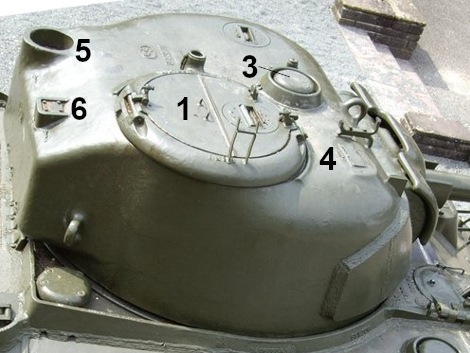 |
"High bustle" 75mm turret (part number D50878 or D78461)


 |
Late "High bustle"
75mm turret (part number D78461)
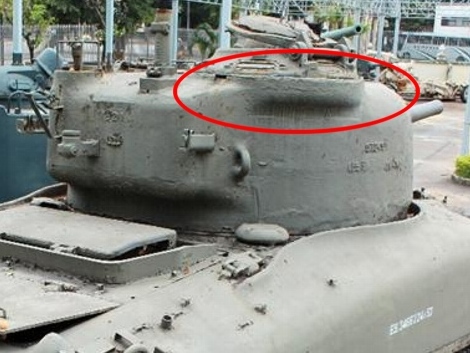 Late high bustle D78461 turrets have
a bulge to better accomodate the commanders vision cupola (circled in
red). This modification seems to have appeared on turrets produced from
November 1944 (Joe DeMarco).
Late high bustle D78461 turrets have
a bulge to better accomodate the commanders vision cupola (circled in
red). This modification seems to have appeared on turrets produced from
November 1944 (Joe DeMarco).
Sherman 105mm turret types
The 105mm turret is a
transformed "High bustle" 75mm turret, with an additional
ventilator at the rear (circled in red on the last photo),
behind the tank commander's and loader's hatches. It is usually found
with the late model of tank commander's hatch (vision cupola).
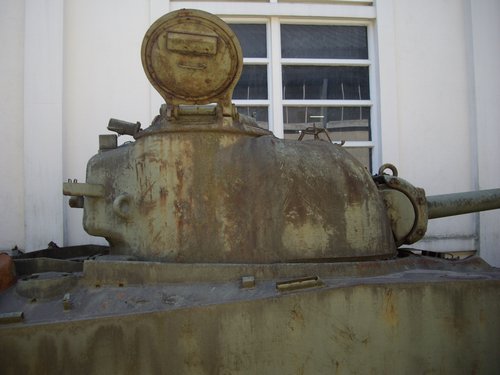
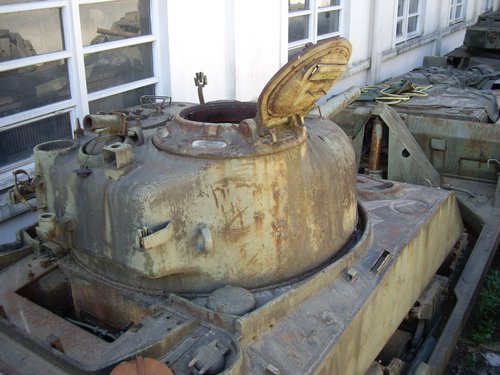
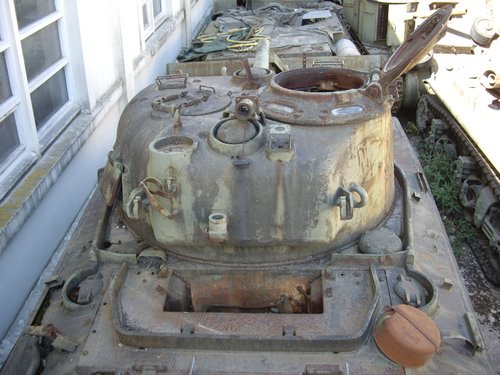
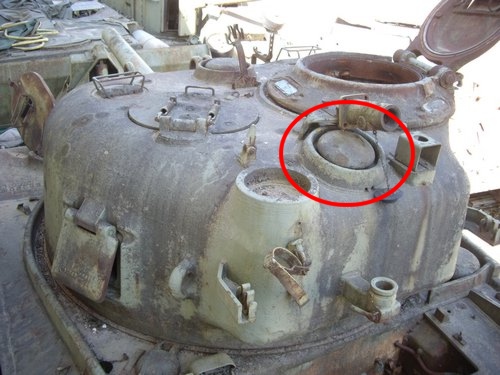
Sherman 76mm turret (a.k.a. T23 turret) types
When the 76 mm gun was
first installed in the M4 turret, mounting this gun in the original M4
turret proved to be problematic,
and so the larger turret from the aborted T23 tank
project was
used instead for
the definitive production version of the 76 mm M4 Shermans.
There were 3 main variants for the T23 turret.
The earliest T23 turrets that were installed on 76mm M4 Shermans
directly came from the T23 production run. They can be recognized
thanks to the extra lifting ring on the turret edge (circled in red),
that was suppressed on later turrets.
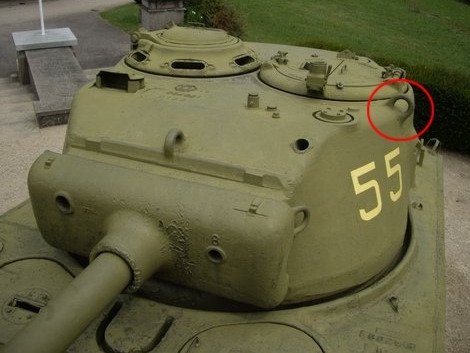
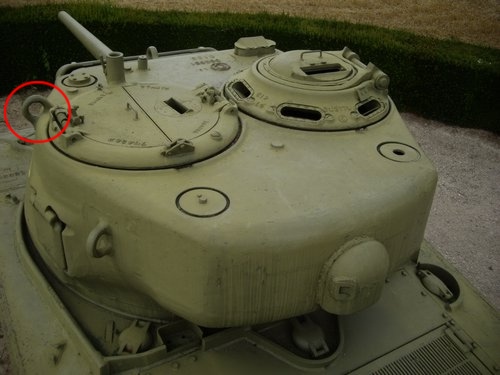
The following T23 turret variants have this extra lifting ring suppressed, as shown below.
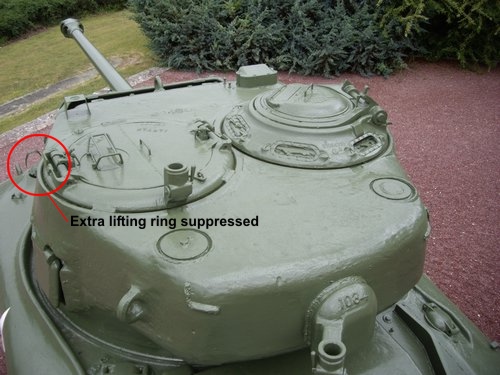 Those later turrets can be found :
Those later turrets can be found :
-with 2 cupolas, the loader's cupola on the left side usually being a
"split hatch" cupola (part number D82081, first picture below)
-with either a "split hatch cupola" or a "vision cupola" for the
tank commander
and an oval hatch for the loader (part number 7054366, second and third pictures below)


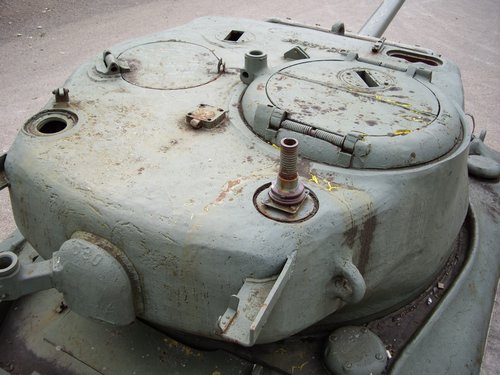
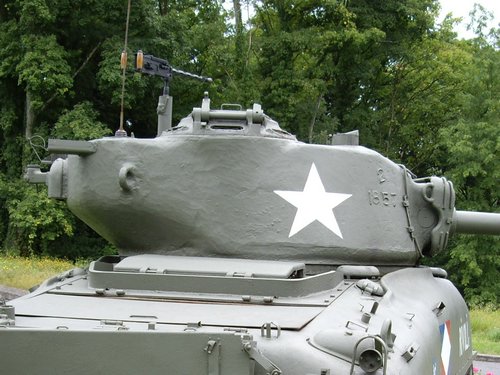
The early T23 turrets
have two large cupolas, the loader's cupola on the left
side is usually a "split hatch cupola" (with a
2-pieces hatch), and the tank commander's cupola on the right
side is usually a "vision cupola" (with a 1-piece hatch).
The late T23 turrets
have the loader's cupola replaced with an oval hatch. The tank
commander's hatch on the right side is either a "split hatch cupola" (with
a 2-pieces hatch, as seen on the picture) or a "vision cupola"
(with
a 1-piece hatch).
HOME